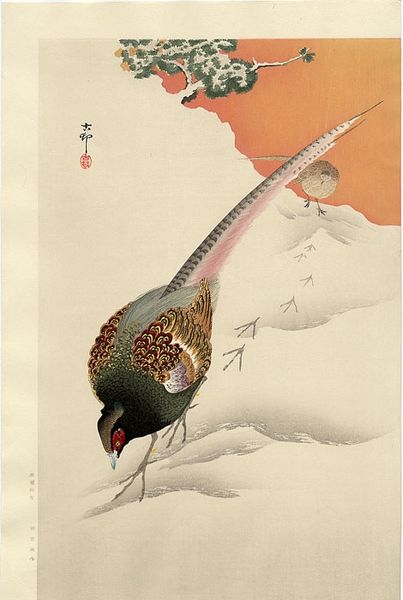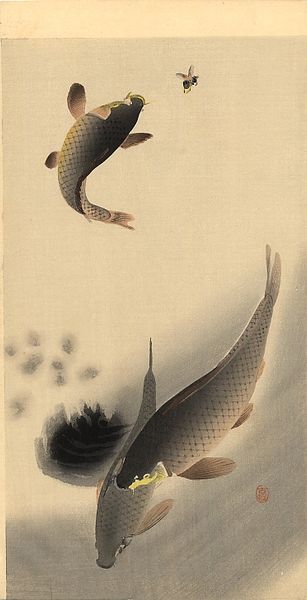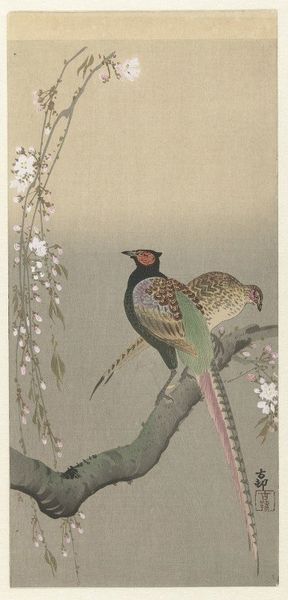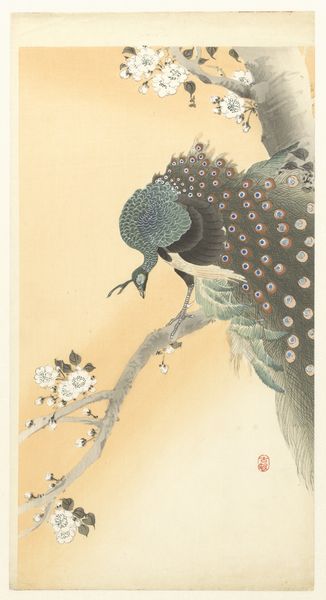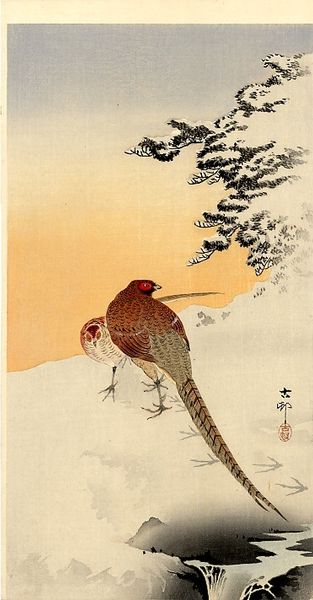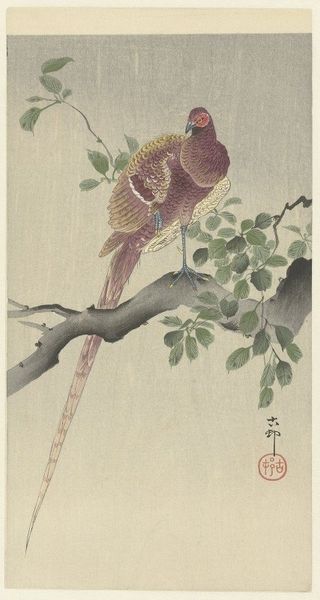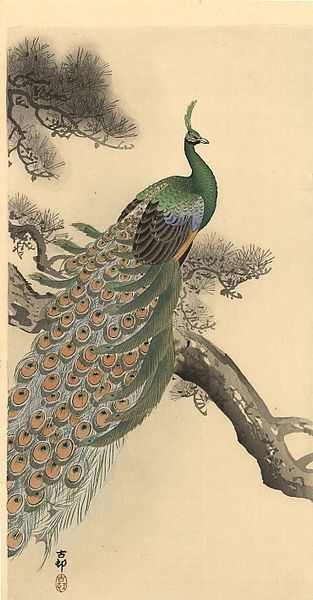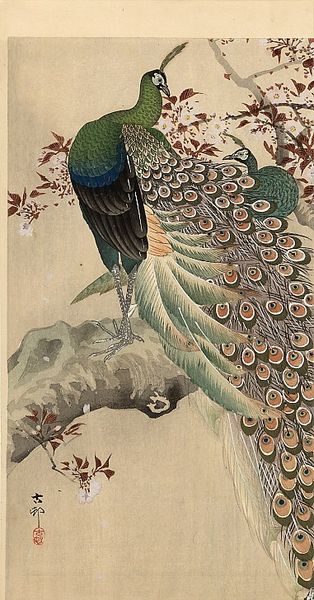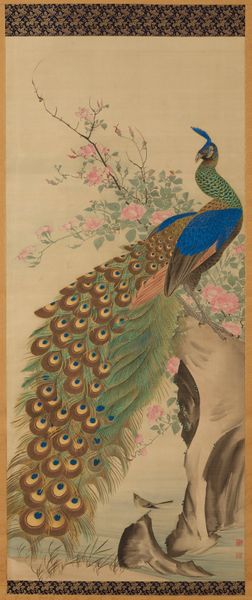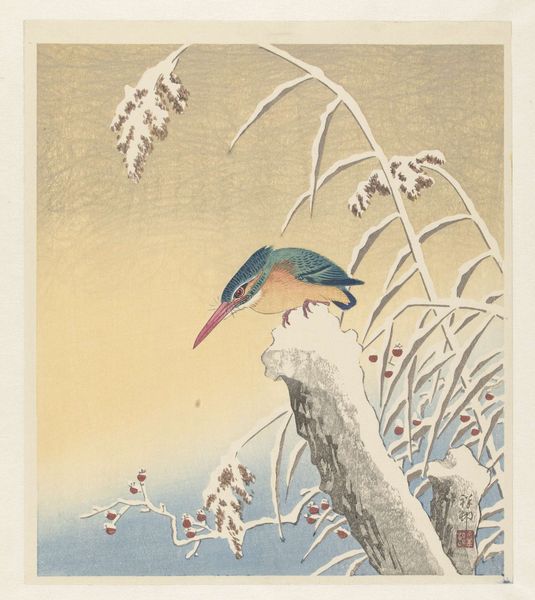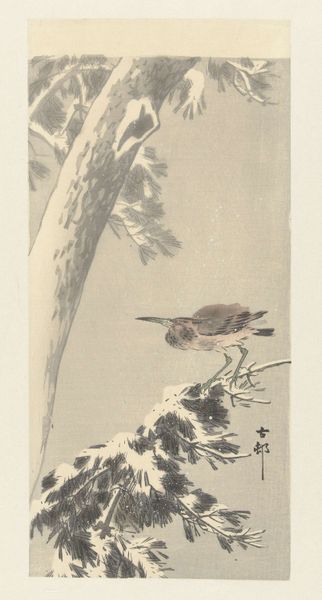
Dimensions: height 422 mm, width 266 mm
Copyright: Rijks Museum: Open Domain
Curator: Look at the stark beauty of this image! My first thought is quiet resilience; the composition and near monochrome tones are gorgeous. Editor: This is "Pair of Pheasants in the Snow," a woodblock print created by Ohara Koson sometime between 1900 and 1945. What grabs you about it? Curator: The vulnerability, really. Two birds struggling against the elements... it feels pertinent, given our current socio-political climate, doesn't it? That constant fight for survival, for warmth, for visibility... it's a striking piece of ukiyo-e art that hits hard. Editor: Ukiyo-e, as we know, flourished, particularly amongst the merchant classes. It's intriguing to consider how nature, like these pheasants, became such a prominent subject, offering a contrast to the burgeoning urban life of the period. The patronage came from people who lived amidst the urban culture. The cultural appreciation of rural imagery makes an interesting counterpoint, doesn't it? Curator: Exactly! The tension there is palpable, especially as nature in Japanese culture is often connected with purity and spirituality. What about its reception in the West? Do you know if there were clear socio-economic drivers? Editor: Its arrival in the West was part of the larger Japonisme wave. Initially valued more for its design elements than its narrative content, it influenced everyone from the Impressionists to the Art Nouveau movement. This highlights a power dynamic, a selection that fits colonial tastes, or not. The muted tones appealed because those aligned with then 'current taste.' Curator: So the birds, these symbols of nature and endurance, became translated, becoming commodities... their essence flattened by external tastes. The politics of looking...it changes everything. Editor: And speaks to the painting’s ability to capture how we, as both observers and participants, shape the very nature we perceive and seek to dominate. Curator: Very well observed; it also speaks to my personal belief about the continued relevance of visual arts in speaking out in resistance, not only on sociopolitical issue, but more about power, control and resilience of subaltern groups within a cultural hegemony. Editor: Precisely. Each impression of "Pair of Pheasants in the Snow" becomes a subtle commentary on these complex power dynamics, continuing the relevance of art as an ongoing and powerful social dialogue.
Comments
No comments
Be the first to comment and join the conversation on the ultimate creative platform.
